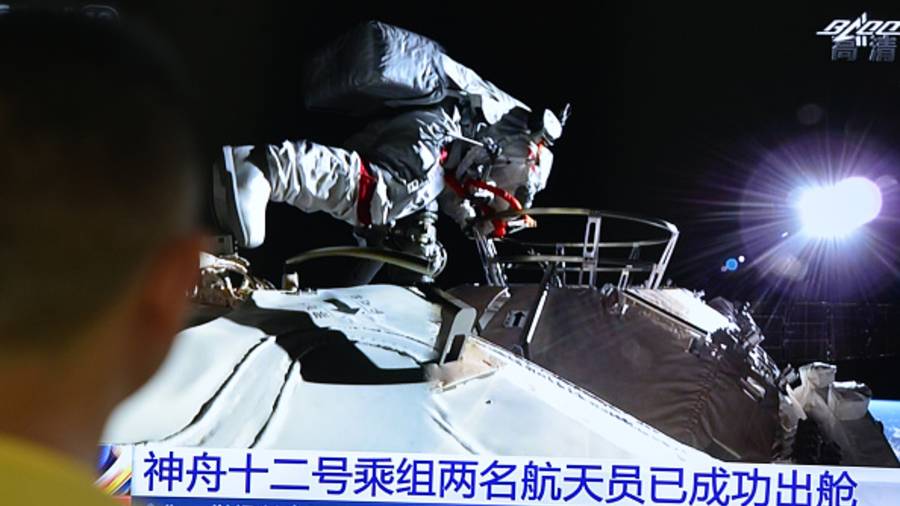Chinese astronauts on Sunday successfully carried out the second spacewalk in the country's history as two of the three astronauts stepped out of the orbiting space station core module for seven hours and completed the designated tasks, China's space agency said.
According to state-run CGTN-TV, China's first spacewalk was conducted during the Shenzhou 7 manned mission in 2008.
Sunday's mission was also China's first spacewalk outside the space station.
China launched three male astronauts -- Nie Haisheng, Liu Boming, and Tang Hongbo -- into space in June. Boming and Hongbo, stationed in the space station core module Tianhe, ventured outside to conduct the first extravehicular activities (EVAs) of their current mission with the support of a robotic arm, while Nie stayed in the cabin to command and assist them to conduct the tasks.
Liu and Tang spent nearly seven hours outside the station, the China Manned Space Agency (CMSA) said.
The space station is expected to be ready by next year. The three astronauts boarded the core module on June 17.
The Chinese space station was expected to be a competitor to the aging International Space Station (ISS), which is a modular space station in low Earth orbit.
The ISS is a multinational collaborative project involving five participating space agencies -- NASA (US), Roscomos (Russia), JAXA (Japan), ESA (Europe) and CSA (Canada).
China's Tiangong is expected to be the sole space station once ISS retires. The station has a robotic arm over which the US has raised concerns for its possible military applications as it can be stretched to 15 metres long.
China in the past has launched several scavenger satellites fitted with robotic arms to gather and steer space debris so it burns up in the Earth's atmosphere.
The scheduled tasks of the EVAs, including equipment installation and panoramic camera lifting, were accomplished with close coordination between space and the ground, as well as between the astronauts inside and outside of the spacecraft.
The EVAs tested the performance and function of the new-generation homemade extravehicular mobility units and the coordination between the astronauts and the mechanical arm, as well as the reliability and safety of related EVA supporting equipment, state-run Xinhua news agency reported.
This has laid an important foundation for subsequent EVAs for the space station construction, the CMSA said.
PTI

